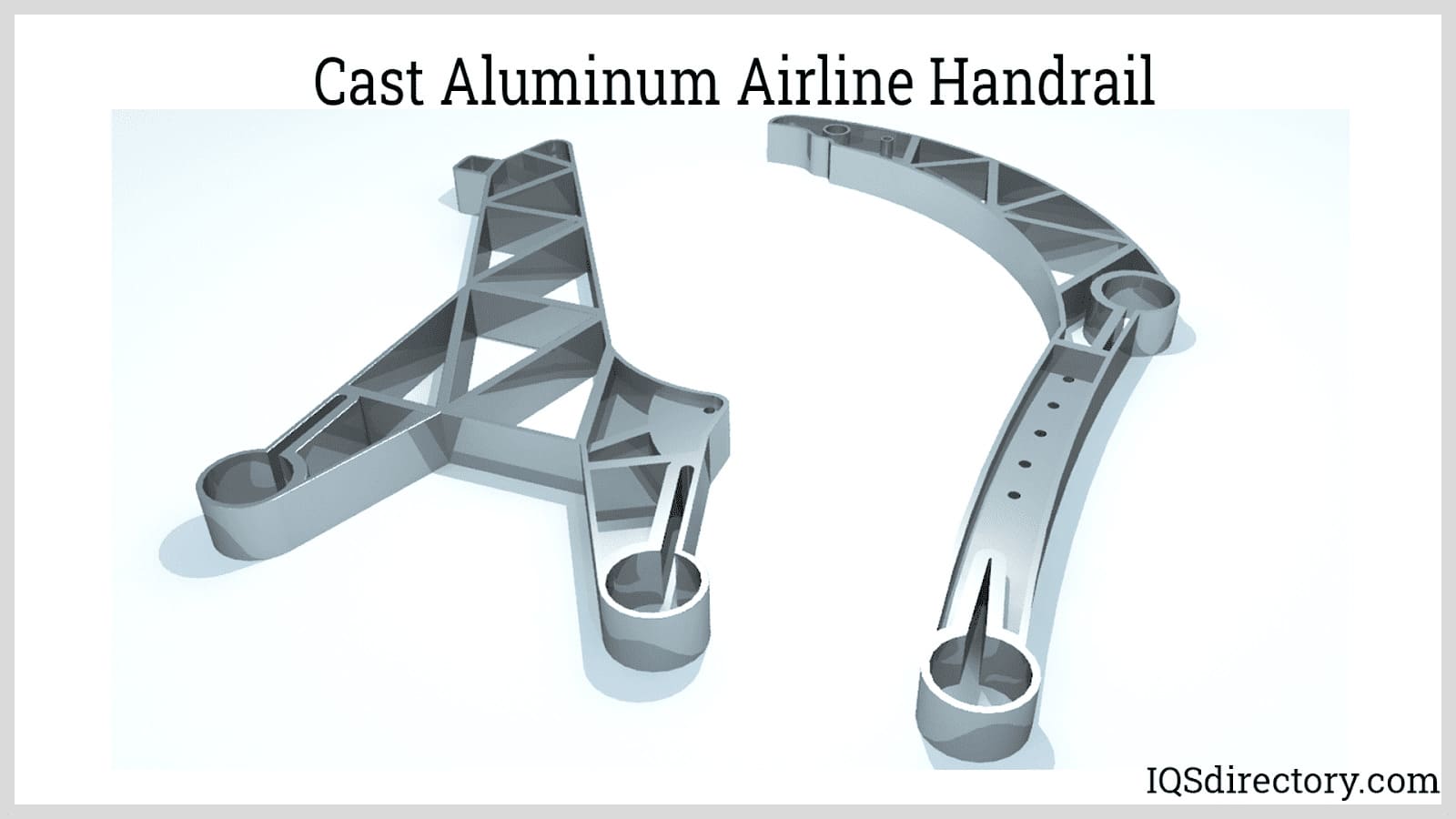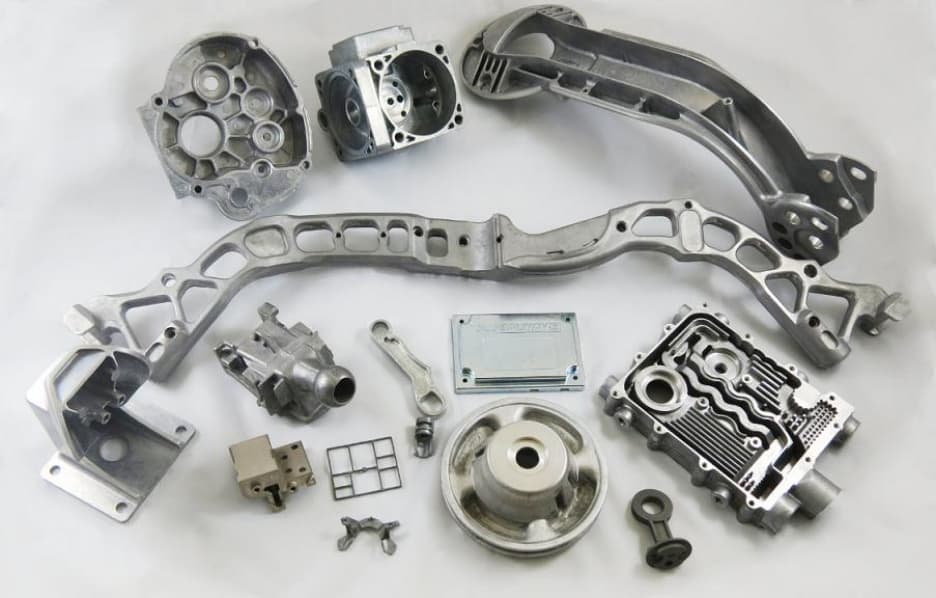Exploring the importance of Aluminum Castings in today’s manufacturing
The Lots Of Uses of Aluminum Castings: A Comprehensive Guide for Sector Professionals
Aluminum castings play an essential function throughout various industries, many thanks to their unique buildings. These light-weight and long lasting elements are crucial in vehicle and aerospace applications. Comprehending their advantages and the manufacturing procedures entailed can substantially impact efficiency and efficiency. As modern technology advancements, brand-new developments proceed to arise. Sector specialists should think about these factors to make educated options. The ramifications of these advancements are worth exploring further.
Benefits of Aluminum Castings in Numerous Industries
Aluminum spreadings offer many benefits throughout different industries, making them a recommended selection for lots of applications. Among the key benefits is their lightweight nature, which adds to overall energy efficiency in transport and machinery. This minimized weight additionally improves convenience of managing and installment, causing lower labor costs.
Light weight aluminum castings display exceptional deterioration resistance, prolonging the life expectancy of components in rough environments. Their thermal and electric conductivity enables reliable warmth dissipation and effective electrical applications.
In addition, light weight aluminum can be conveniently alloyed and manipulated, allowing the development of complicated shapes and designs that meet particular engineering needs. This versatility sustains innovation in industries such as auto, aerospace, and durable goods.
Finally, the recyclability of light weight aluminum aligns with lasting techniques, making it an eco-friendly option for modern-day production. In general, the benefits of light weight aluminum spreadings place them as necessary materials in numerous sectors.
Secret Production Processes for Aluminum Castings
A range of manufacturing processes are used to create aluminum spreadings, each tailored to fulfill certain application needs and production quantities. Among one of the most typical methods are sand spreading, pass away spreading, and investment casting.

Investment spreading, also referred to as lost-wax casting, provides outstanding surface area coatings and detailed information, frequently made use of for smaller, accuracy parts. Additionally, gravity casting utilizes the force of gravity to fill molds, ideal for larger castings where accuracy is less crucial. Each procedure has its benefits, providing to diverse commercial demands while maximizing performance and top quality in light weight aluminum casting manufacturing.
Applications of Light Weight Aluminum Castings in Automotive and Aerospace
In various applications within the aerospace and vehicle sectors, light weight aluminum castings play a crucial role due to their light-weight residential or commercial properties and outstanding strength-to-weight ratio. In the automotive industry, components such as engine blocks, transmission cases, and wheel edges are frequently produced making use of light weight aluminum castings. These parts benefit from lowered weight, leading to boosted fuel efficiency and improved efficiency.
In aerospace, aluminum castings are essential for structural parts, consisting of airplane frameworks, landing gear, and engine real estates. The material's resistance to deterioration and ability to withstand high temperatures make it optimal for these demanding applications. Additionally, light weight aluminum castings assist in intricate find more info geometries, enabling the find out here now design of elaborate parts that add to general aircraft effectiveness.
Advancements and Improvements in Aluminum Casting Technology
As sectors proceed to progress, technologies in light weight aluminum spreading technology are driving substantial enhancements in efficiency and performance. Advanced strategies such as 3D printing and spreading simulation software program have changed conventional techniques, allowing for much more exact designs and decreased waste. These technologies enable manufacturers to develop complicated geometries that were previously unattainable, improving the adaptability of aluminum castings.
Additionally, the development of brand-new alloy compositions and therapy techniques has actually enhanced mechanical properties, making castings lighter yet more powerful. Automated processes are additionally being incorporated, decreasing human mistake and increasing production rate.

Best Practices for Utilizing and selecting Light weight aluminum Castings
When picking and making use of light weight aluminum spreadings, mindful consideration of details standards can substantially influence the final item's efficiency and long life. Sector experts ought to examine the specific application requirements, including load-bearing abilities, deterioration resistance, and thermal conductivity. Selecting the appropriate alloy is vital, as different alloys offer differing qualities and staminas.
Additionally, understanding the casting process-- whether sand casting, pass away casting, or financial investment casting-- will influence the end product's high quality and cost-effectiveness. Quality guarantee procedures, such as non-destructive testing read review and dimensional evaluations, are important to assure that the spreadings satisfy market criteria.
Correct handling and storage space of light weight aluminum spreadings can avoid damages, ensuring peak performance. Collaborating with reliable distributors who focus on quality control can improve the dependability of the ended up parts. By adhering to these ideal practices, sector professionals can make best use of the advantages of light weight aluminum castings in their applications.
Regularly Asked Questions
What Are the Environmental Effects of Light Weight Aluminum Casting Production?
Light weight aluminum spreading production can lead to considerable ecological influences, including greenhouse gas exhausts, power consumption, and source depletion. Additionally, inappropriate waste administration might lead to soil and water contamination, influencing local environments and communities.
How Do Aluminum Castings Contrast to Various Other Steel Castings?
Light weight aluminum castings are lighter and corrosion-resistant compared to various other metal spreadings like iron or steel. They provide exceptional thermal and electric conductivity, making them optimal for applications where weight and longevity are vital elements.
What Is the Price Distinction In Between Light Weight Aluminum and Other Products?
The cost of light weight aluminum castings commonly ranges from modest to high, often more budget friendly than stainless steel however pricier than some plastic alternatives. Aluminum Foundry. Aspects such as manufacturing quantity, material, and complexity requirements significantly influence general rates
Can Light Weight Aluminum Castings Be Reused?
Aluminum spreadings can certainly be recycled. This process significantly decreases power consumption and environmental influence compared to generating brand-new light weight aluminum, making reusing a vital technique in promoting sustainability and resource conservation within various sectors.
What Precaution Should Be Taken During Aluminum Spreading Processes?
Throughout aluminum spreading processes, necessary precaution consist of putting on protective gear, ensuring proper air flow, using heat-resistant devices, preserving devices, and following safety and security protocols to avoid exposure to unsafe products and minimize the danger of mishaps. (Aluminum Foundry)
Sand spreading involves developing a mold and mildew from sand, allowing for huge castings and intricate forms. Financial investment casting, also recognized as lost-wax casting, supplies outstanding surface coatings and elaborate details, commonly made use of for smaller, accuracy parts. Additionally, gravity spreading makes use of the pressure of gravity to fill up mold and mildews, appropriate for larger spreadings where precision is much less vital. Additionally, recognizing the spreading procedure-- whether sand casting, die spreading, or financial investment spreading-- will influence the final item's high quality and cost-effectiveness. Aluminum spreadings are lighter and corrosion-resistant contrasted to various other steel castings like iron or steel.